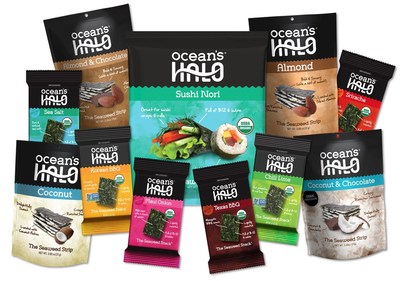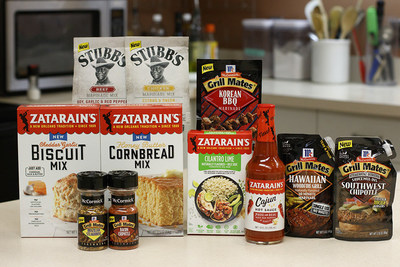Specially formulated, herbal dog tea reduces gas, prevents bloating and is guaranteed to
stop car sickness for dogs and cats.
LOS ANGELES, Jan. 24, 2017 /PRNewswire/ -- You already know that dogs play
poker,
but did you know dogs drink tea?
If you own a dog, you know that car rides are something they either love or hate! For many
dogs, all the new sights and sounds associated with a car ride can be too much.
Even short trips can trigger car and motion sickness in dogs. All dog breeds have
an equal chance of getting car sick. Puppies are frequently affected due to their
relatively undeveloped ears. While most dogs will grow out of motion sickness
after turning one year old, it can affect dogs of any age. It is more likely to happen
for dogs not used to car rides. Dogs that only go on one or two trips a year
(usually to the vet) can be particularly susceptible.
While nausea and vomiting are the most common signs, motion-sick
dogs may also whine, whimper and yelp. Excessive panting, yawning,
drooling, and pacing are other indicators. Alternatively, some dogs may
get very quiet, be inactive or look lethargic.
To start with, try to build up your dog's tolerance for car rides by taking it
on short trips around the neighborhood for a few days, going a bit farther
each day. Consider using a special canine seat-belt, and always let your
dog face forward in the car. Rolling down the car windows will help make your
dog more comfortable too.
While these basic steps may help reduce the affects of car sickness, many
cases are too intense and owners avoid important trips like taking their dog
to the vet due to the trauma of getting there. For those seeking a true and
natural solution to canine car sickness, you will be relieved to discover there
is a guaranteed way to stop your family's best friend from getting sick.
Believing in the healing power of tea, the boutique, loose leaf tea company
California Tea House began their mission to formulate an organic herbal tea to
resolve the car sickness of their beloved Great Dane named Machu Picchu.
After a couple of years of blending and testing their determination paid off.
Machu's Blend Tea for Dogs is now available to the public and is so
effective, it is guaranteed to stop car sickness. Machu's Blend is an organic,
herbal tea comprised of chamomile, ginger root, fennel seed, skullcap and calendula.
Machu's Blend Dog Tea is an all-natural proven solution in alleviating a debilitating
problem without giving your dog expensive prescribed medicine or ineffective,
over-the-counter products with unnatural ingredients. In addition to helping your
dog with motion sickness, this holistic tea blend promotes a calming affect, l
owers stress, aids digestion of dry dog food, which consequently reduces dog
bloat and gas. Best of all, it serves as a special, healthy treat your dog will love.
California Tea House is a family-owned company dedicated to serving the
finest quality, artisanal loose leaf tea blends, sourced from the best organic,
sustainable farms all over the world. You can order Machu's Blend
directly from their online store with free shipping here: https://www.californiateahouse.com/
This press release was issued through 24-7PressRelease.com.
For further information, visit http://www.24-7pressrelease.com.
but did you know dogs drink tea?
If you own a dog, you know that car rides are something they either love or hate! For many
dogs, all the new sights and sounds associated with a car ride can be too much.
Even short trips can trigger car and motion sickness in dogs. All dog breeds have
an equal chance of getting car sick. Puppies are frequently affected due to their
relatively undeveloped ears. While most dogs will grow out of motion sickness
after turning one year old, it can affect dogs of any age. It is more likely to happen
for dogs not used to car rides. Dogs that only go on one or two trips a year
(usually to the vet) can be particularly susceptible.
While nausea and vomiting are the most common signs, motion-sick
dogs may also whine, whimper and yelp. Excessive panting, yawning,
drooling, and pacing are other indicators. Alternatively, some dogs may
get very quiet, be inactive or look lethargic.
To start with, try to build up your dog's tolerance for car rides by taking it
on short trips around the neighborhood for a few days, going a bit farther
each day. Consider using a special canine seat-belt, and always let your
dog face forward in the car. Rolling down the car windows will help make your
dog more comfortable too.
While these basic steps may help reduce the affects of car sickness, many
cases are too intense and owners avoid important trips like taking their dog
to the vet due to the trauma of getting there. For those seeking a true and
natural solution to canine car sickness, you will be relieved to discover there
is a guaranteed way to stop your family's best friend from getting sick.
Believing in the healing power of tea, the boutique, loose leaf tea company
California Tea House began their mission to formulate an organic herbal tea to
resolve the car sickness of their beloved Great Dane named Machu Picchu.
After a couple of years of blending and testing their determination paid off.
Machu's Blend Tea for Dogs is now available to the public and is so
effective, it is guaranteed to stop car sickness. Machu's Blend is an organic,
herbal tea comprised of chamomile, ginger root, fennel seed, skullcap and calendula.
Machu's Blend Dog Tea is an all-natural proven solution in alleviating a debilitating
problem without giving your dog expensive prescribed medicine or ineffective,
over-the-counter products with unnatural ingredients. In addition to helping your
dog with motion sickness, this holistic tea blend promotes a calming affect, l
owers stress, aids digestion of dry dog food, which consequently reduces dog
bloat and gas. Best of all, it serves as a special, healthy treat your dog will love.
California Tea House is a family-owned company dedicated to serving the
finest quality, artisanal loose leaf tea blends, sourced from the best organic,
sustainable farms all over the world. You can order Machu's Blend
directly from their online store with free shipping here: https://www.californiateahouse.com/
This press release was issued through 24-7PressRelease.com.
For further information, visit http://www.24-7pressrelease.com.
CONTACT: Will Bailey, will@californiateahouse.com, 213-915-8327












 You
can use sliced Canadian bacon for a lower-fat version of this hearty egg
dish.
You
can use sliced Canadian bacon for a lower-fat version of this hearty egg
dish.